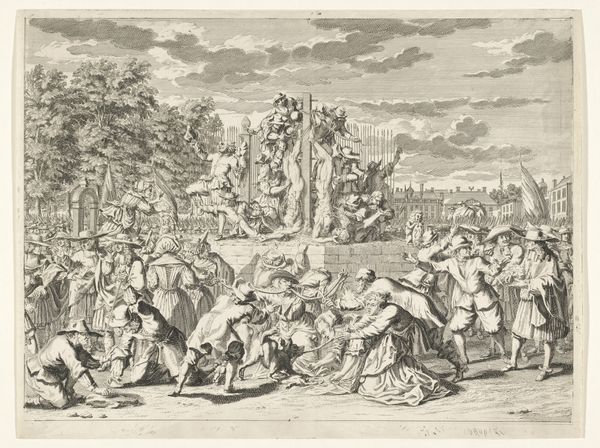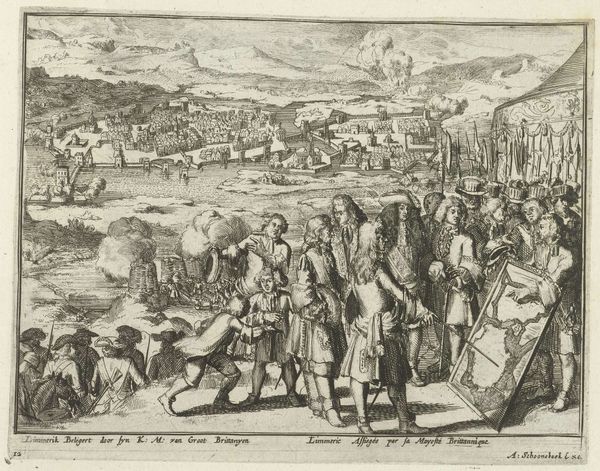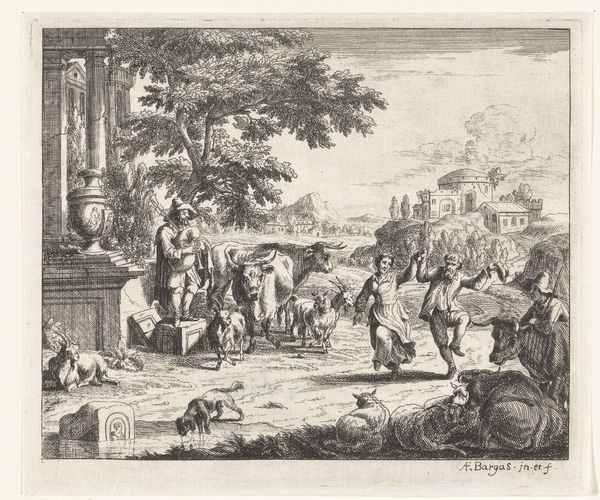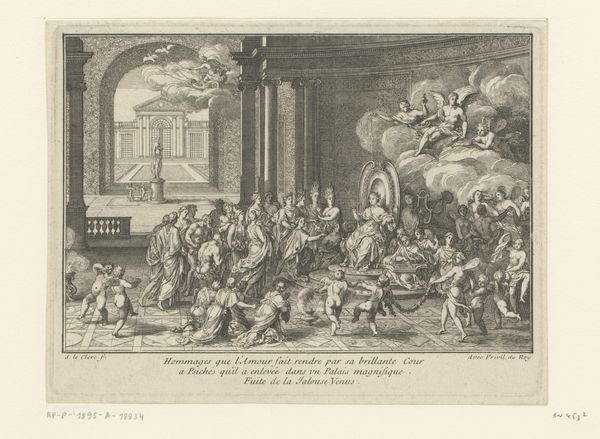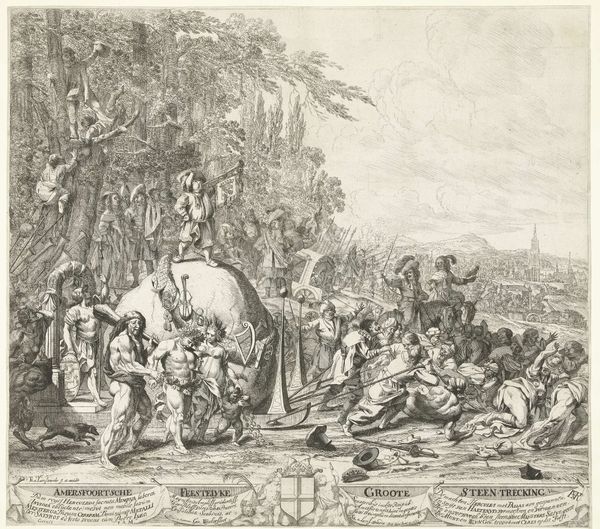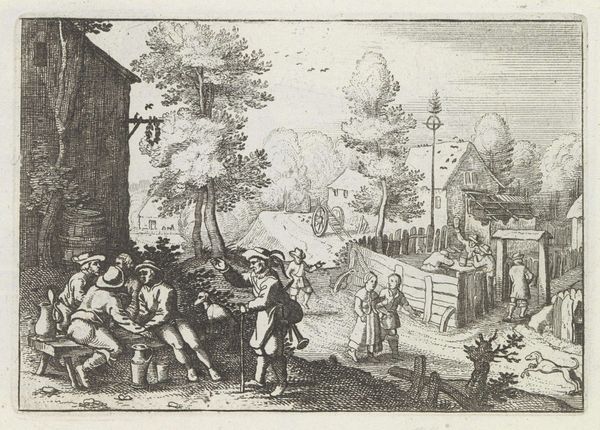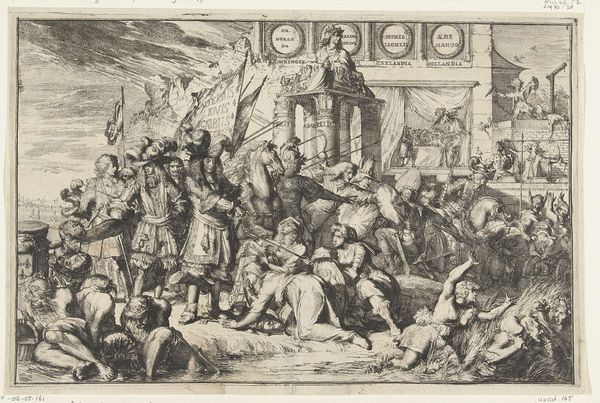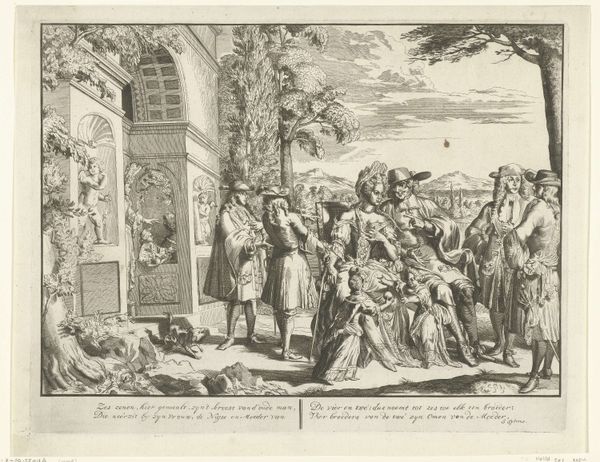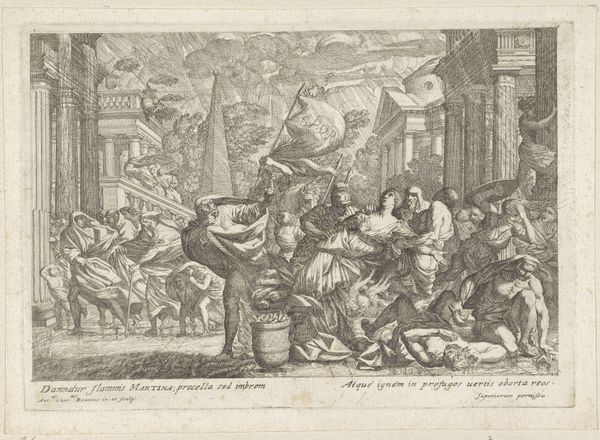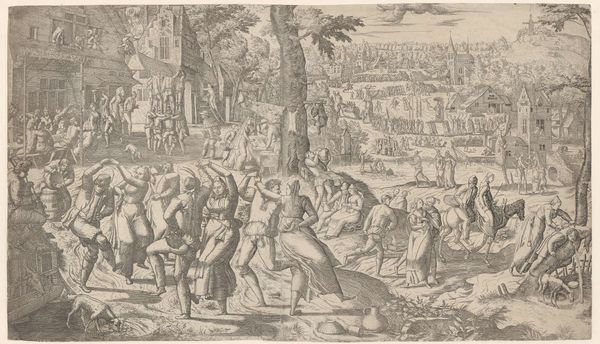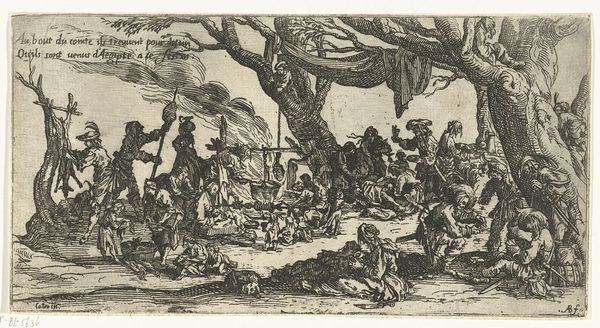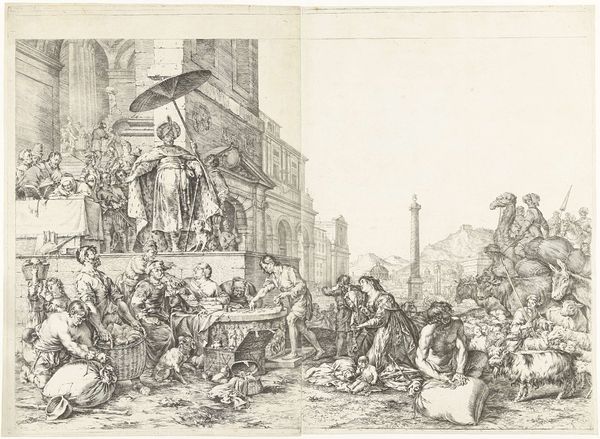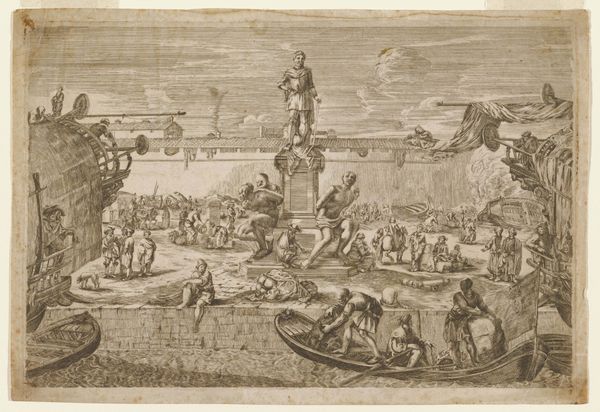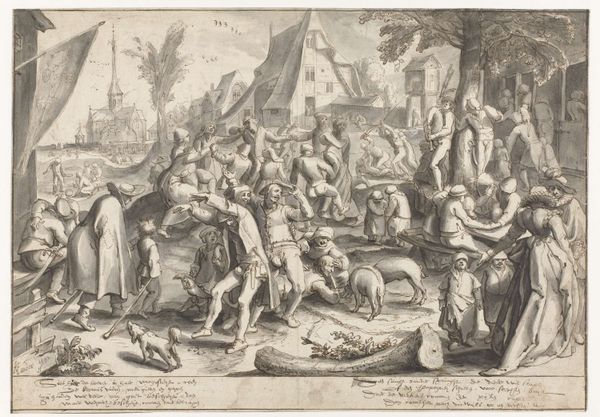
engraving
#
ink drawing
#
narrative-art
#
baroque
#
figuration
#
cityscape
#
history-painting
#
engraving
#
realism
Dimensions: height 271 mm, width 357 mm
Copyright: Rijks Museum: Open Domain
Curator: This print, “Verminking van de lichamen van de gebroeders de Witt, 1672,” was created around 1728 by Bernard Picart and resides here at the Rijksmuseum. It’s a powerful example of narrative art from the Baroque period. Editor: It certainly is…Visually, it's a dense composition; the eye jumps between clusters of activity. The monochromatic engraving style lends it a stark, almost brutal feel, wouldn't you say? Curator: Absolutely. The brutal quality mirrors the historical context. The piece depicts the gruesome mutilation of Johan and Cornelis de Witt, two Dutch statesmen, by an enraged mob in 1672. It is important to remember the impact on their family, particularly as Cornelis' daughter, Willemina, became a vocal defender of her father. Editor: One is immediately struck by how Picart uses the crowd as a compositional tool, funneling the viewer's attention towards the central act of desecration. There’s an unsettling symmetry in the arrangement of bodies. Curator: The city in the background seems deliberately indifferent. This highlights the lack of intervention and the broader societal implications of mob violence and political instability. The act becomes a metaphor for a society turning on itself. Editor: Do you think Picart is trying to provoke a specific response from the viewer? The exaggerated poses and stark contrasts do seem to hint at a desire to shock. Curator: Yes, and to warn. There's a definite cautionary element to the image, reminding us of the dangers of unchecked power and the fragility of social order. We need to reflect upon what triggers individuals or groups to turn to acts of senseless destruction. Editor: The realism in the engraving contributes to its unsettling quality; it presents the event with almost forensic precision. It makes you wonder how he captured the light falling in certain planes with such limited gradations. Curator: Well, Picart likely based his image on eyewitness accounts and existing depictions, synthesizing them into a cohesive and impactful visual narrative that serves as both a historical record and a social commentary. Editor: Looking at it through a contemporary lens, it encourages me to question how acts of violence—and our perceptions of them—are mediated and framed through visual representation. Curator: Indeed. The piece speaks volumes, reminding us of how crucial understanding the past is, and how collective violence is never disconnected from individual tragedies and experiences.
Comments
No comments
Be the first to comment and join the conversation on the ultimate creative platform.
